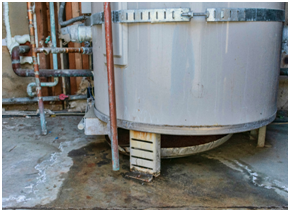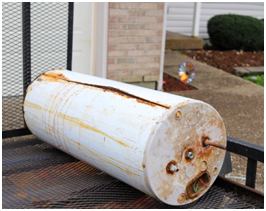 If your hot water heater has been in use for more than eight or nine years, you will probably need to replace it sooner rather than later. You may even have to dispose of it. If you choose to do it yourself, the first challenge is to remove it properly. It is also a challenge to dispose of it properly once it has been removed from the house.
If your hot water heater has been in use for more than eight or nine years, you will probably need to replace it sooner rather than later. You may even have to dispose of it. If you choose to do it yourself, the first challenge is to remove it properly. It is also a challenge to dispose of it properly once it has been removed from the house.
There is nothing more unpleasant and inconvenient than being in the shower to find that no hot water is available. It is a real emergency when a residential hot water heater suddenly passes on to the Great Appliance Beyond.
How Long Should Your Hot Water Heater Last?
A hot water tank's lifespan will vary depending on its brand and level of maintenance. Water heaters typically begin showing signs of aging after about 12 years of use, although it is not uncommon for well-maintained water heaters to last up to 15 years. However, if you are spending a great deal of money on water heater repairs, then you may want to consider upgrading to a new and more efficient unit.
Nevertheless, for most homeowners, it is still far better to have one professionally installed than to attempt to install it themselves. It should be noted, however, that many of the same homeowners might not hesitate to remove the recently deceased water heater themselves. In fact, most homeowners can perform this task if they are aware of both the requisite steps and the various risks involved in working with an appliance that can weigh up to 300 pounds. That is when they are empty!
This is another factor to consider. When planning to remove an old water heater, it is prudent to remember that, until it has been properly and safely emptied, you are also working with a tank that holds as much as 75 gallons of incredibly hot water. Although it may appear to be a doable DIY project, it should be approached with caution.
How Do You Dispose of a Hot Water Heater?
The hot water tanks are made of steel, copper, and a few other metals. In addition, there are several other materials inside the outer shell that are not recyclable. The good news is that most, if not all, of your hot water heater parts can be recycled. Typically, the outer casing is made of sheet steel, which has a high recovery value and can be recycled indefinitely. The water tank itself is generally constructed from stainless steel. The bulk of the materials that make up your old hot water tank can and should be recycled since other metals, particularly copper, are always in demand by scrap dealers and recyclers. Unfortunately, the fiberglass insulation that wraps around the inner tank area is not recyclable. Fiberglass insulation can, however, be recycled in some cases and even repurposed into new products.
If you are successful in removing your old hot water tank yourself, the next question is what to do with the various parts of the tank? It is possible that you would like to simply dispose of everything at the nearest landfill or transfer station, but this may not be the best option. In fact, this may not even be an option depending on where you live! You may be able to take it all to a scrap metal dealer near you, but keep in mind that you will still need a suitable vehicle to transport it. It will also be necessary to load all the materials and then unload them. These factors can add up to a great deal of additional work and expenses that you may not have anticipated. Scrap metal does have value, but don't expect to earn much money from it.
Hire a Junk Removal Company
So, what are your other options? The good news is that you can simply contact a local, professional junk removal service. We at Pro Junk Dispatch can handle this task for you. With our efficient, safe, and eco-friendly appliance removal services, you'll never have to worry about the pickup or disposal of your appliances. Any debris or junk can be broken down and hauled away by an experienced junk removal company. The backseat of your car is not designed to accommodate these bulky items, but junk removal trucks are. The heavy lifting will be done by us!
Filed Under: Company News


